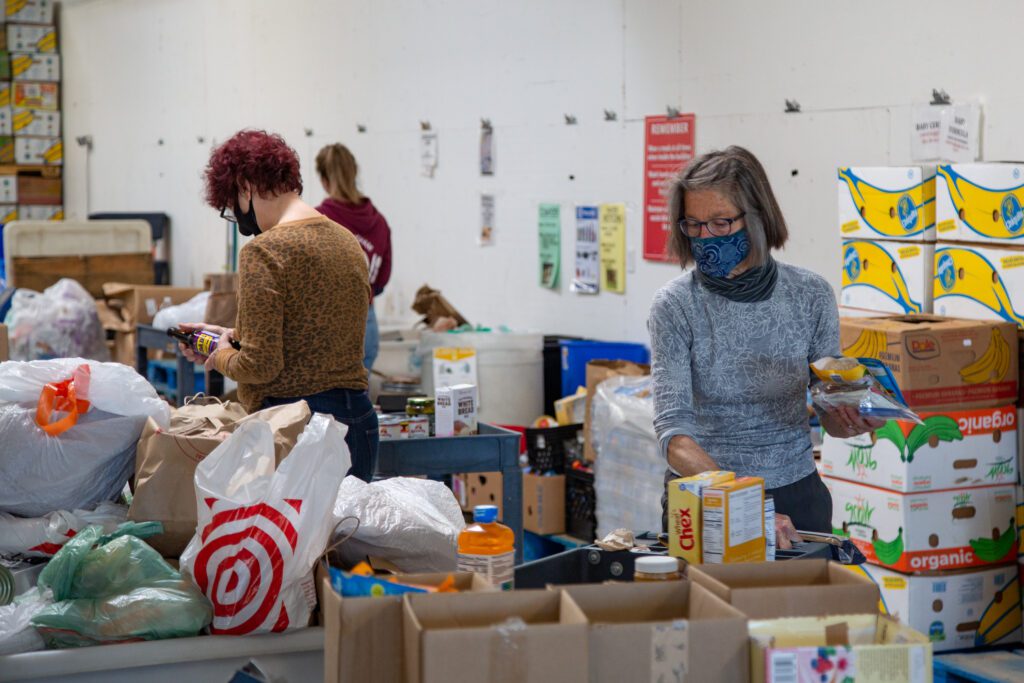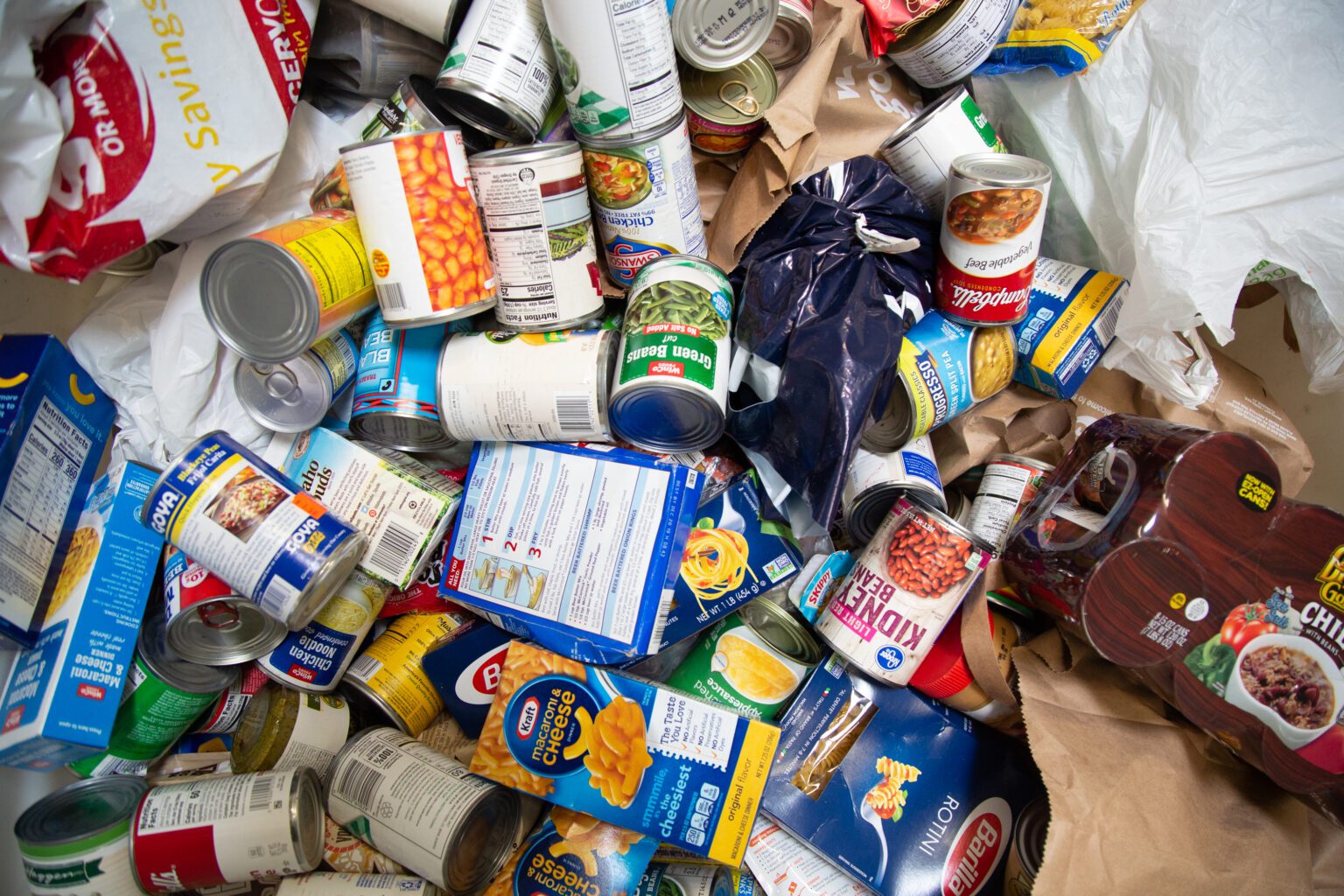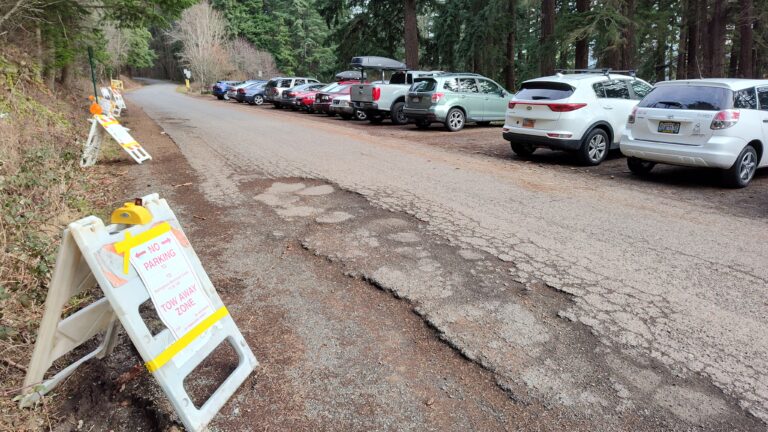Amid the loud noise, manufactured chaos and profit-driven disagreement that keeps our society on constant Tilt-A-Whirl edge, a deep breath and focus on common ground remains a possibility.
Here’s one humble try.
We do, in fact, have some facts of life upon which people of varying political persuasions still can agree. One is that food, shelter and sustenance are basic human rights. (Health care, in our society, seems curiously optional; more on that another day.)
Mike Cohen’s job is first on that list and his approach is refreshingly clear and candid.
Whatcom County’s food bank system, a lifeline for folks who, for myriad reasons, find themselves unable to feed themselves or their families, is over-stressed. Funds to buy staples to distribute to those in need aren’t keeping up with demand. And the shortfall is likely to get worse as supplemental federal funding fades away.
The county’s food banks “all have experienced massive growth” in customers throughout 2022, continuing unabated into 2023,” Cohen, Bellingham Food Bank’s executive director, said in a phone interview.
The statistics are sobering and staggering: As many as 20% of Whatcom County residents visit a food bank weekly. Visits have soared from 40,000 per month to nearly 90,000 since January 2022. It is, Cohen said, an unprecedented need — greater even than the depths of the national 2008 economic recession and the height of COVID-19 disruption.
“Food insecurity is definitely up, nationally,” he said. At the same time, some food banks are open less frequently, and with fewer goods, due to soaring inflationary prices for food staples.
Bottom line: “We don’t have resources to keep food on the shelves.”
The drivers, Cohen believes, are both simple and complex. The cost of living has soared, especially in Northwest Washington, far more rapidly than what people bring home from their jobs, benefits, or combinations thereof. Daily essentials such as gas, utilities and housing have followed suit.
A family’s food budget, Cohen notes, is a significant expense — one of few that people have a little control over.
“You can’t short your rent, can’t stretch that gallon of gas anymore than it is,” he said. “But you can find ways to spend less on food. It’s one of the most basic needs that has some elasticity to it.”
Food banks, he said, used to be considered by society as an emergency system — a response to a crisis such as an unexpected gigantic medical bill, the loss of a job, a death in the family by a wage-earner. “Sadly, more and more, we are part of people’s weekly shopping experience,” Cohen said.
“The forces and systems that put and keep most people in poverty are well outside the food security work,” he continued. “We deal with the outcomes of unjust systems and an unjust society that keeps low-income people low-income, often for many generations.”
Those people, he noted, are disproportionately people of color, immigrants, refugees and other disadvantaged groups. “That’s true countywide, statewide, and nationally.”
Contrary to perceptions, the “average” food bank customer is not homeless. They are more likely to be suffering silently, living in a home next door, or in a vehicle in a non-obvious place.
“Ninety percent of our people have an address,” Cohen said. “And most of the food we give out goes into a refrigerator or freezer, not a microwave.”

Food banks primarily deal in staples with high nutritional value: apples, onions, potatoes, milk, frozen proteins, etc. The Bellingham Food Bank buys and delivers 3,000 dozen eggs every week. Last year those eggs cost about $1.20 a dozen. Now they’re more than $3. Do the math.
Place the blame for all this where you will, but acknowledge the obvious: The food bank funding shortage is an immediate crisis, one that requires a pulling together of community, private and public resources.
Fortunately, unlike some other intractable problems, noted above, the solution to this one is clear: A more stable stream of money to meet expanding needs.
The county’s food bank system, run largely by a heroic rotating core of hundreds of volunteers, keeps the wheels turning and groceries delivered. But the grease for all those wheels is financing.
For years, the local food bank’s primary source of funding (in 2022, total revenues were about $3.5 million) has been individual donations, Cohen said. Local businesses and philanthropic organizations are next on the list. Government brings up the tail end, often making up a shortfall. Bellingham’s food bank spent $7 million last year, creating what Cohen considers “a really significant deficit.”
He has appealed, already, to the Whatcom County Council and Bellingham’s administration, outlining a need that’s only likely to grow as temporary federal relief benefits are reduced or phased out.
The goal: get both bodies to commit to funding at least at the current, federally assisted level, using remnant money from those sources, or establishing new local funding streams. He’s asking local governments to collectively commit to about $2 million a year through 2024 to keep food on the county’s tables, as well as curb mounting deficits.
Recent conversations with the county council revealed a consensus on meeting part of that need, details still in play. Preliminary discussion with Mayor Seth Fleetwood and staff give Cohen guarded optimism.
“They didn’t say no,” he said. “We are continuing to meet and see if they can find funding at a similar level” to the county. “I am hopeful.”
All good signs. But some additional action by private citizens and pressure on public officials feels in order here. Let’s consider it a challenge for a caring community.
Simple solutions to this problem are within the reach of most of us: volunteer some time (a delivery program that exploded during the pandemic is in particular need of helping hands on wheels). Make an online donation to your local food bank. Even small donations add up.
Then make a call or send an email to your city council or county council rep to ensure food security stays on their stove’s front burner.
“Access to healthy food is a basic human right,” Cohen said. “Local government can and should contribute more.”
Ron Judd’s column appears on Wednesdays; ronjudd@cascadiadaily.com; @roncjudd.





Commentary response: Nursing-home staffing mandates critical to dignified care